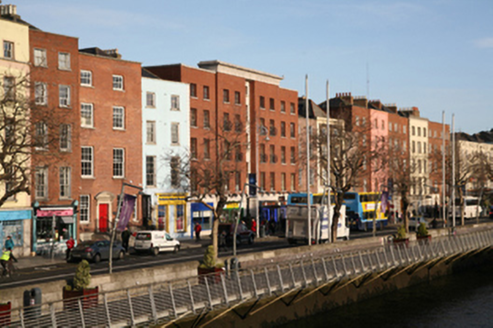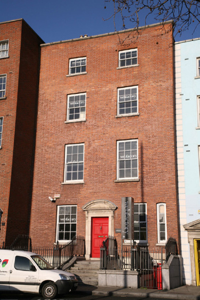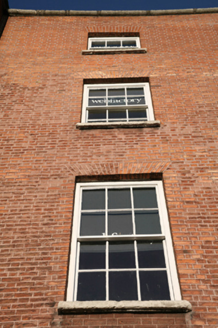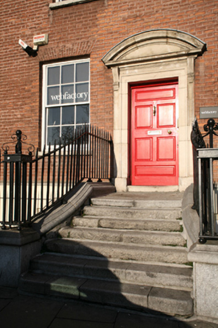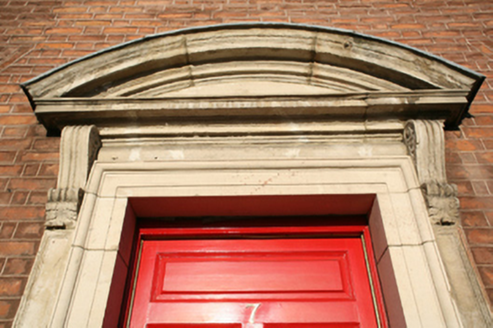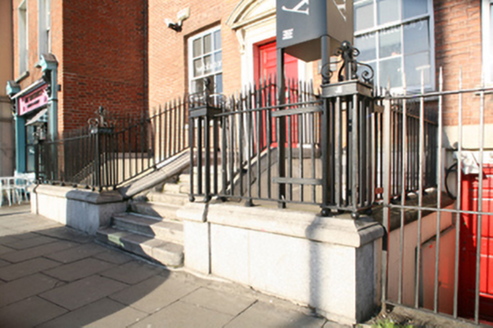Survey Data
Reg No
50010334
Rating
Regional
Categories of Special Interest
Architectural, Artistic
Original Use
House
In Use As
Office
Date
1710 - 1750
Coordinates
315760, 234349
Date Recorded
05/12/2011
Date Updated
--/--/--
Description
Terraced two-bay four-storey house over raised basement, built c.1730, restored c.1995, now in commercial office use. M-profile slate roof with ridges set perpendicular to street, hipped behind parapet wall with convex moulded granite coping, gabled to rear. Brick chimneystack with clay pots to west party wall. Red brick walls laid in Flemish bond with recent tuck lime pointing, replacement chamfered granite plinth course over ruled-and-lined cement rendered basement walls. Rubbed gauged brick flat-arched window openings with Portland stone sills and replacement timber sliding sash windows with part exposed sash boxes. Gauged brick segmental-headed slender window opening to east ground floor with two-over-two pane timber sliding sash window. Square-headed door opening with pedimented Portland stone doorcase. Replacement timber door with raised-and-fielded panels, architrave surround flanked by slender panels resting on common plinth blocks surmounted by scrolled console brackets framing pulvinated frieze and supporting full segmental pediment with lead lining. Door opens onto granite platform and seven granite steps (replacement to lower two), bridging the basement. Platform enclosed by replacement iron railings on replacement moulded granite plinth wall swept to street and returning to enclose basement areas to either side. Matching iron gate to east with stone steps to basement entrance.
Appraisal
Bachelor’s Walk was laid out c.1680 as an extension of Ormond Quay, with the building of residences starting in the early 1700s by wealthy merchants. This house is one of the best examples of this early construction date to survive the demolitions of the 1980s. Retaining an original panelled interior and original staircase until the 1990s, all the joinery was eventually stolen and later replicated in a meticulous restoration of the building. Along with Nos.8, 13, 14 and 15, the retention of this house formed part of an inspired reconstruction of Bachelor’s Walk, which despite being a pastiche version of the original, has managed to reinstate the rhythmic and vertical character of the quayside after half a century of dereliction.
